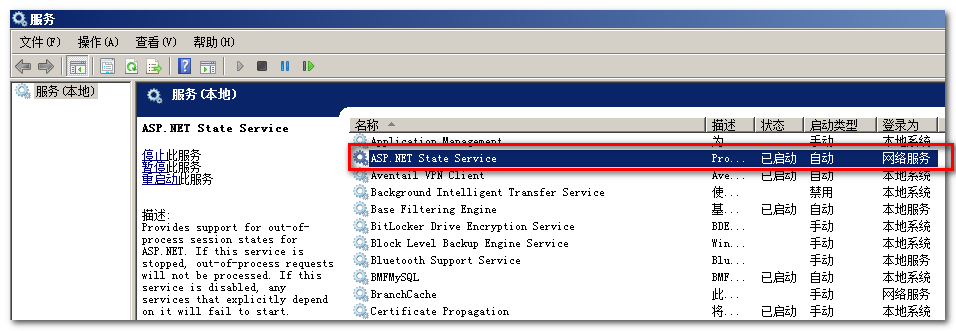类别:程序开发
日期:2023-03-22 浏览:1725 评论:0
一 读取.txt文件
如果要读取的文件内容不是很多,可以使用 File.ReadAllText(filePath) 或指定编码方式 File.ReadAllText(FilePath, Encoding)的方法,它们是基于using System.IO下的类,它们都一次性将文本内容全部读完,并返回一个包含全部文本内容的字符串。
string str1 = File.ReadAllText(@"d:\Mytest\book.txt"); //也可以指定编码方式 string str2 = File.ReadAllText(@"d:\Mytest\book.txt", Encoding.ASCII);
也可以使用方法File.ReadAllLines,该方法一次性读取文本内容的所有行,返回一个字符串数组,数组元素是每一行的内容.
string[] strs1 = File.ReadAllLines(@"c:\Mytest\book.txt"); // 也可以指定编码方式 string[] strs2 = File.ReadAllLines(@"c:\Mytest\book.txt", Encoding.ASCII);
当文本的内容比较大时,我们就不要将文本内容一次性读完,而应该采用流(Stream)的方式来读取内容。(using System.Text 下面的类)
.Net为我们封装了StreamReader类,它旨在以一种特定的编码从字节流中读取字符。StreamReader类的方法不是静态方法,所以要使用该类读取文件首先要实例化该类,在实例化时,要提供读取文件的路径。实例化StreamReader类有很多种方式。
StreamReader sR1 = new StreamReader(@"c:\Mytest\book.txt"); // 同样也可以指定编码方式 StreamReader sR2 = new StreamReader(@"c:\Mytest\book.txt", Encoding.UTF8); FileStream fS = new FileStream(@"C:\Mytest\book.txt", FileMode.Open, FileAccess.Read, FileShare.None); StreamReader sR3 = new StreamReader(fS); StreamReader sR4 = new StreamReader(fS, Encoding.UTF8); FileInfo myFile = new FileInfo(@"C:\Mytest\a.txt"); // OpenText 创建一个UTF-8 编码的StreamReader对象 StreamReader sR5 = myFile.OpenText(); // OpenText 创建一个UTF-8 编码的StreamReader对象 StreamReader sR6 = File.OpenText(@"C:\Mytest\book.txt");
初始化完成之后,你可以每次读一行,也可以每次读一个字符 ,还可以每次读几个字符,甚至也可以一次将所有内容全部读完.
// 读一行 string nextLine = sR.ReadLine(); // 读一个字符 int nextChar = sR.Read(); // 读100个字符 int n = 100; char[] charArray = new char[n]; int nCharsRead = sR.Read(charArray, 0, n); // 全部读完 string restOfStream = sR.ReadToEnd();
使用完StreamReader之后,一定不要忘记关闭它: sR.Close();
假如我们需要一行一行的读,将整个文本文件读完,下面看一个完整的例子:
StreamReader sR = File.OpenText(@"C:\Mytemp\book.txt");
string nextLine;
while ((nextLine = sR.ReadLine()) != null)
{
Console.WriteLine(nextLine); //读取内容
}
sR.Close();//关闭文件二 写入.txt文件
写文件和读文件一样,如果你要写入的内容不是很多,可以使用File.WriteAllText方法来一次将内容全部写如文件。如果你要将一个字符串的内容写入文件,可以用File.WriteAllText(FilePath) 或指定编码方式 File.WriteAllText(FilePath, Encoding)方法
string str1 = "Good Morning!"; File.WriteAllText(@"c:\Mytemp\test\aa.txt", str1); // 也可以指定编码方式 File.WriteAllText(@"c:\Mytemp\test\aa.txt", str1, Encoding.ASCII);
如果你有一个字符串数组,你要把数组的每一个元素作为一行写入文件中,可以用File.WriteAllLines方法
string[] strs = { "Good Morning!","Good Afternoon!","Good Evening!"};
File.WriteAllLines(@"c:\Mytemp\aa.txt", strs);
// 也可以指定编码方式
File.WriteAllLines(@"c:\Mytemp\aa.txt", strs, Encoding.ASCII);注意:使用File.WriteAllText或File.WriteAllLines方法时,如果指定的文件路径不存在,会创建一个新文件;如果文件已经存在,则会覆盖原文件
另一种方法,当要写入的内容比较多时,同样也要使用流(Stream)的方式写入
.Net为我们封装了StreamWriter类,它以一种特定的编码向字节流中写入字符。StreamWriter类的方法同样也不是静态方法,所以要使用该类写入文件首先要实例化该类,实例化StreamWriter类同样有很多方式:
// 如果文件不存在,创建文件; 如果存在,覆盖文件 StreamWriter sW1 = new StreamWriter(@"c:\Mytemp\bok.txt"); // 也可以指定编码方式, true 是 Appendtext, false 为覆盖原文件 StreamWriter sW2 = new StreamWriter(@"c:\Mytemp\bok.txt", true, Encoding.UTF8); // FileMode.CreateNew: 如果文件不存在,创建文件;如果文件已经存在,抛出异常 FileStream fS = new FileStream(@"C:\Mytemp\bok.txt", FileMode.CreateNew, FileAccess.Write, FileShare.Read); StreamWriter sW3 = new StreamWriter(fS); StreamWriter sW4 = new StreamWriter(fS, Encoding.UTF8); // 如果文件不存在,创建文件; 如果存在,覆盖文件 FileInfo myFile = new FileInfo(@"C:\Mytemp\bok.txt"); StreamWriter sW5 = myFile.CreateText();
初始化完成后,可以用StreamWriter对象一次写入一行,一个字符,一个字符数组,甚至一个字符数组的一部分
// 写一个字符
sw.Write('a');
// 写一个字符数组
char[] charArray = new char[100];
sw.Write(charArray);
// 写一个字符数组的一部分(10~15)
sw.Write(charArray, 10, 15);同样,StreamWriter对象使用完后,不要忘记关闭。sW.Close(); 最后来看一个完整的使用StreamWriter一次写入一行的例子:
FileInfo myFile = new FileInfo(@"C:\mytemp\a.txt");
StreamWriter sW = myFile.CreateText();
string[] strs = { "早上好", "下午好" ,"晚上好};
foreach (var s in strs)
{
sW.WriteLine(s); //写入数据
}
sW.Close();//关闭文件三 在原有基础上追加一行数据
方法1:
string path="D1.txt";//文件的路径,保证文件存在。 FileStream fs=new FileStream(path,FileMode.Append); SteamWriter sw=new StreamWriter(fs); sw.WriteLine(要追加的内容); sw.Close(); fs.Close();
方法2:
string path="";//文件存放路径,保证文件存在。 StreamWriter sw=new StreamWriter(path,true); sw.WriteLine(追加的内容); sw.Close();
一个完整例子:
//查询是否有文件存在,如果不存在则创建
string path = AppDomain.CurrentDomain.BaseDirectory + DateTime.Now.Date.ToString("yyyy-MM-dd") + ".txt";
try
{
//判断文件是否存在,没有则创建。
if (!System.IO.File.Exists(path))
{
FileStream stream = System.IO.File.Create(path);
stream.Close();
stream.Dispose();
}
}
catch
{
}
//在文件中写入
using (StreamWriter writer = new StreamWriter(path, true))
{
writer.WriteLine("123" + " " + DateTime.Now.ToString());
}



发表评论 / 取消回复